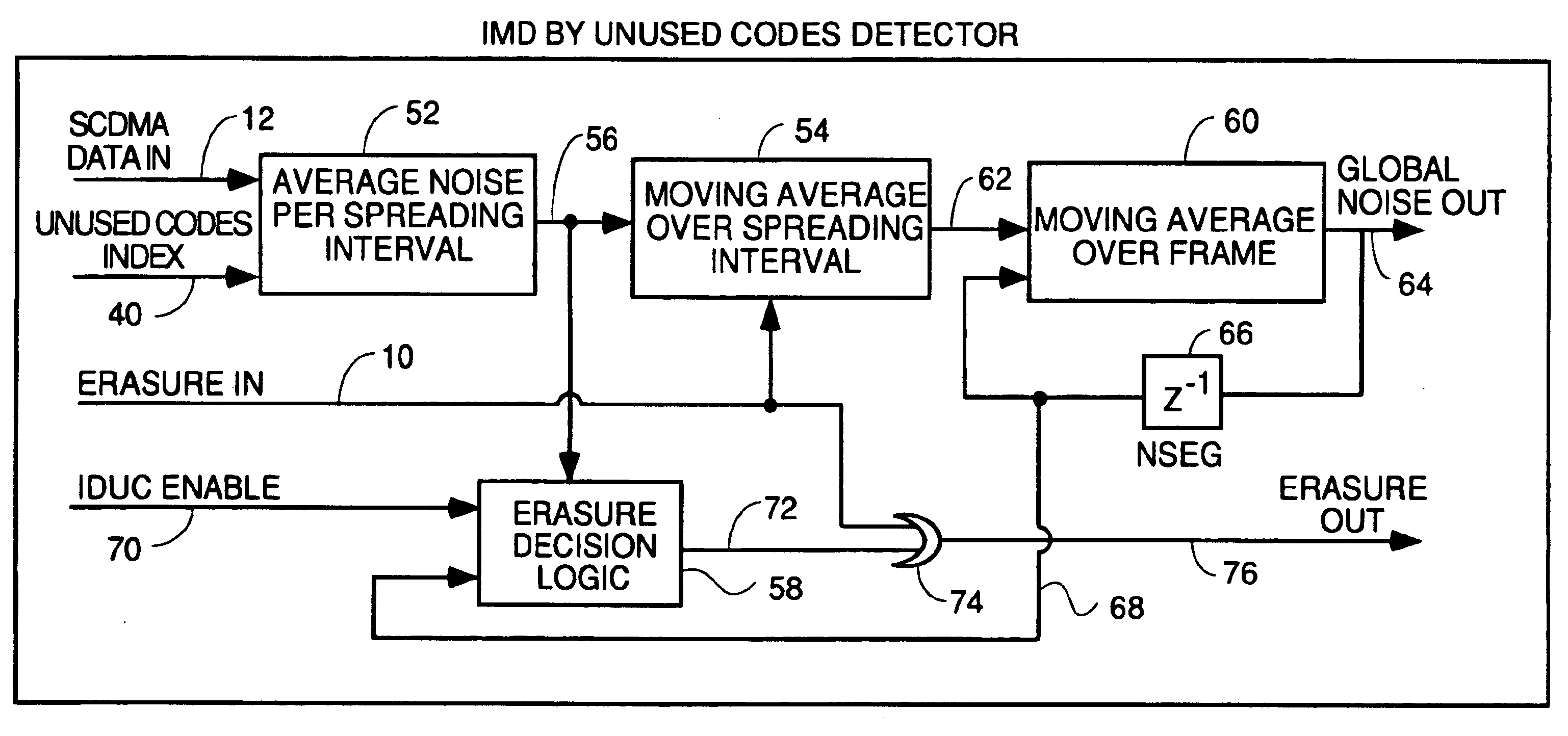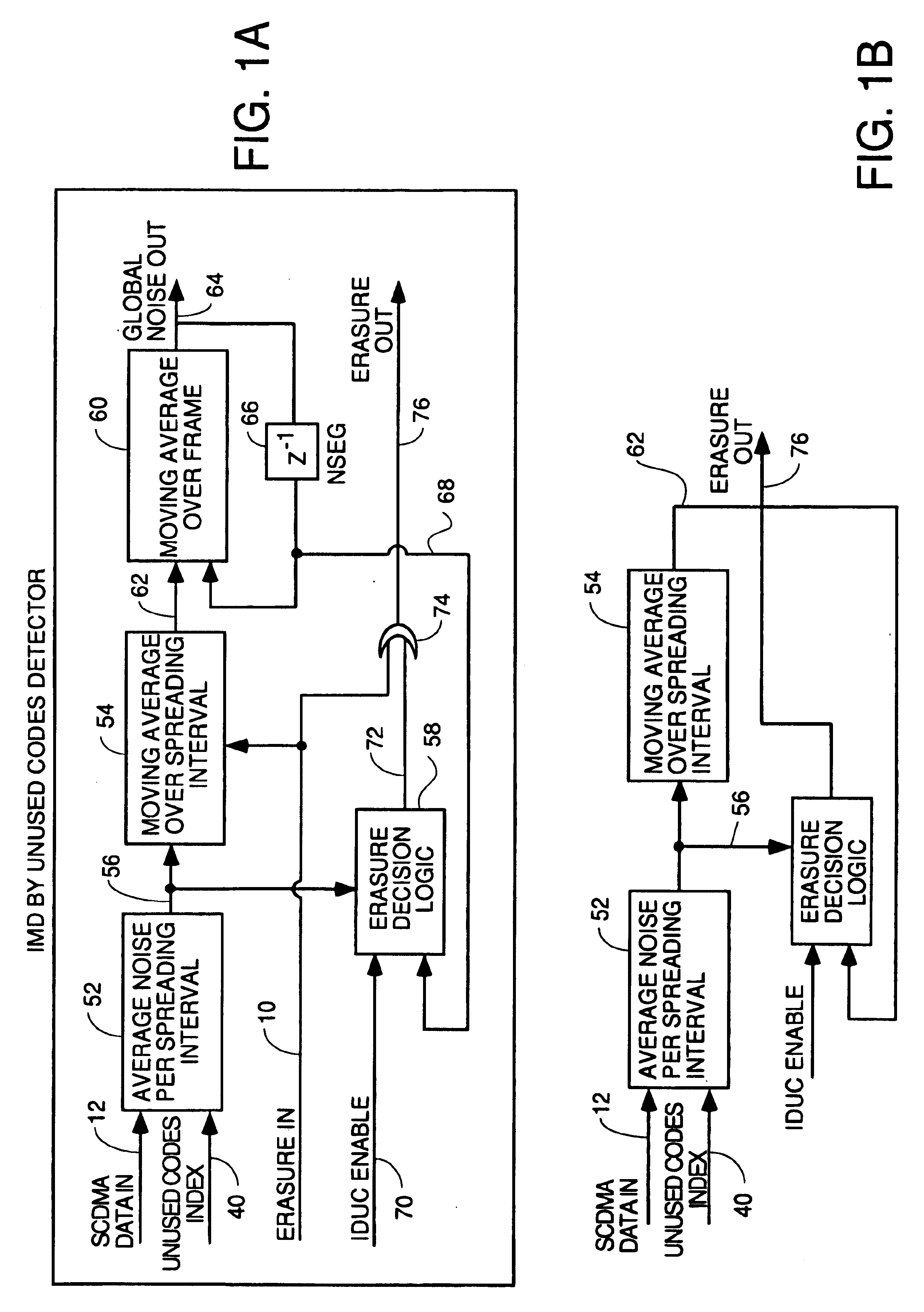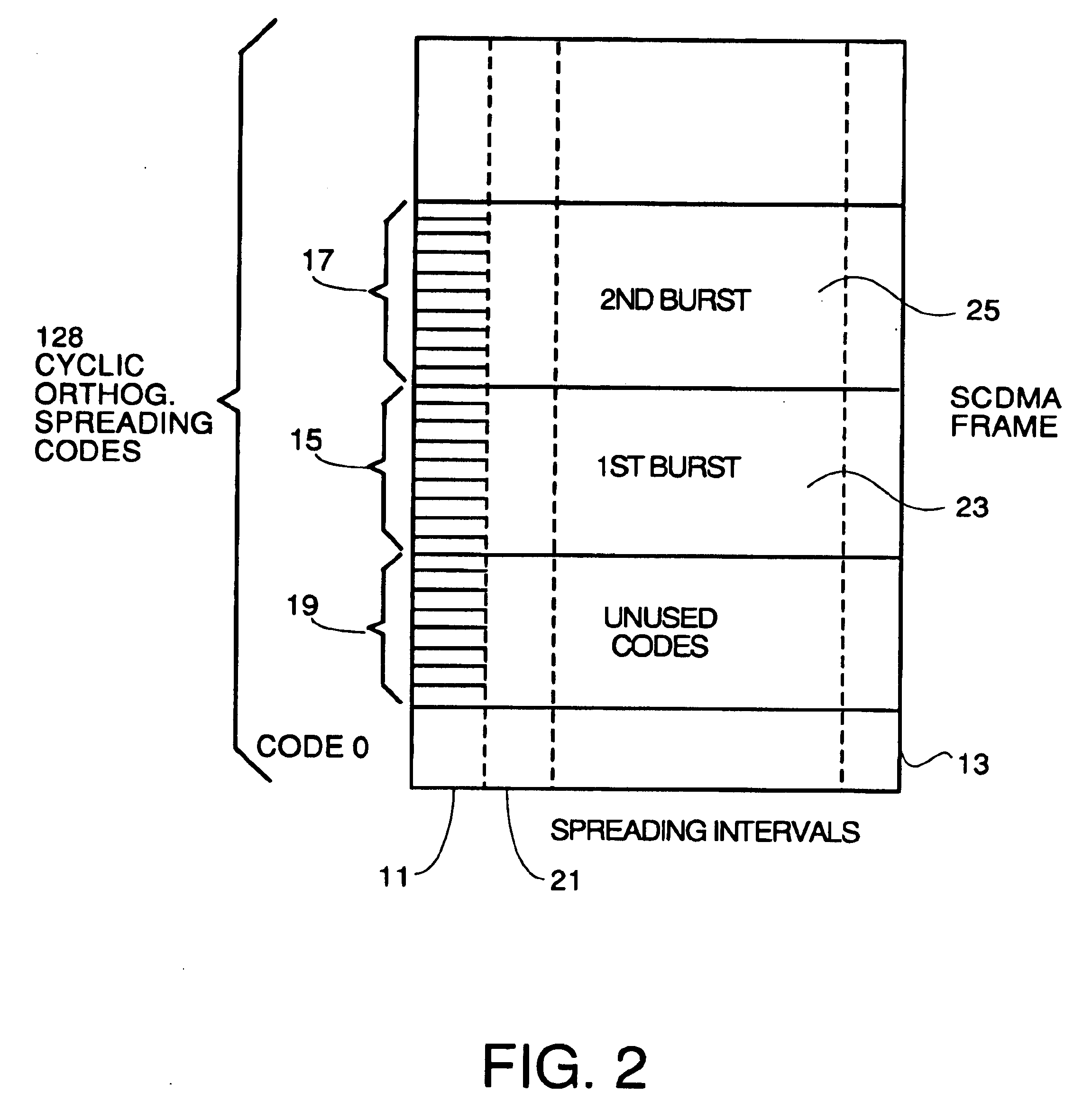Detection of impulse noise using unused codes in CDMA systems
a technology of unused codes and impulse noise, applied in the field of detection of impulse noise using unused codes in cdma systems, can solve the problems of limiting the power of the expected power, noise detection on unused codes, and transmission of payload data corruption, so as to improve the error correction capability of error correction codes, improve the total received power, and eliminate noise
- Summary
- Abstract
- Description
- Claims
- Application Information
AI Technical Summary
Benefits of technology
Problems solved by technology
Method used
Image
Examples
Embodiment Construction
In a CMTS receiver of a cable system where cable modems (CMs) are transmitting upstream bursts using SCDMA technology there are spreading intervals. For purposes of illustration, assume there are 128 different spreading codes which may or may not be cyclic. During each spreading interval, some or all of these codes will be assigned to one or more CMs to transmit bursts. Each CM will use different spreading codes so that their transmissions can be separated by the CMTS in case two or more bursts are transmitted simultaneously by different CMs. To understand the notion of spreading intervals, SCDMA frames and unused codes, refer to FIG. 2.
FIG. 2 is a diagram of a single SCDMA frame which is useful for explaining the structure of a typical SCDMA frame with multiple bursts and showing unused codes. The invention is equally applicable to any code division multiplexed digital data transmission system which has unused spreading codes, but a Synchronous Code Division Multiple Access (SCDMA)...
PUM
 Login to View More
Login to View More Abstract
Description
Claims
Application Information
 Login to View More
Login to View More - R&D
- Intellectual Property
- Life Sciences
- Materials
- Tech Scout
- Unparalleled Data Quality
- Higher Quality Content
- 60% Fewer Hallucinations
Browse by: Latest US Patents, China's latest patents, Technical Efficacy Thesaurus, Application Domain, Technology Topic, Popular Technical Reports.
© 2025 PatSnap. All rights reserved.Legal|Privacy policy|Modern Slavery Act Transparency Statement|Sitemap|About US| Contact US: help@patsnap.com



